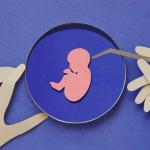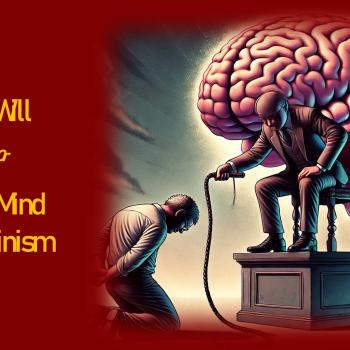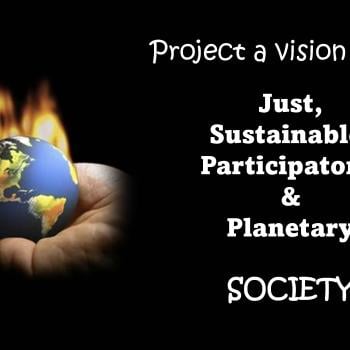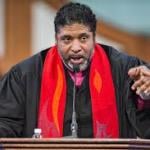Protecting Embryos in the Vatican, Abortion 2

During this 2024 election year, Democrats and Republicans are firing abortion mortars at each other with exploding shells that wound our hearts and tear apart our moral fibers. Democratic rhetorical ballistics so emphasize the right of choice along with women’s health that there is no room left for concern about the unborn child. Republican rhetorical ballistics reverse the compliment. Republicans so emphasize the right to life of the unborn that the wellbeing of the woman gets sidelined. Might there be a supportable approach to abortion between these two extremes, an approach that identifies that stage in fetal development justifying moral and legal protection?
In our previous Patheos post, “Are frozen embryos really children?,” we reported on how the Supreme Court of Alabama declared that the sanctity of human life begins at conception. Morally protectable rights apply to both the in vivo (within the mother’s body) and the ex vivo (extrauterine or outside the mother’s body) conceptus. This means that forming families through in-vitro fertilization (IVF) would become criminalized when discarding unimplanted embryos. We further noted how a feeble attempt on the part of the Alabama legislature to protect IVF clinic employees from prosecution fell short of answering the philosophical question: are frozen embryos really children?
Important for us here is that fact that the Supreme Court of Alabama appealed to biblical and theological reasoning to support this ruling. All this warrants discourse clarification on the part of the public theologian on the matter of protecting embryos.
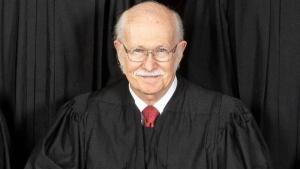
In the case of the Alabama court’s ruling on protecting embryos, the theological reasoning relies on biblical and Protestant sources. This is just fine, to be sure. As valuable as Protestant reflection is, however, it amounts to only a six-volt battery when compared to the dynamo generating Roman Catholic bioethical energy. Over the last half century, the Vatican power plant has generated unmatched erudition and finesse in parsing issues and refining moral arguments. So, it will be worth our while to remind ourselves of just where the Vatican stands on the matter of embryonic dignity and protection from abortion.
I will conclude that, despite the force of Vatican reasoning, the Roman Catholic position is mistaken. When we appeal to what scientists tell us about the early embryo, we will see that natural processes fail to justify the relevant theological conclusions.
When does morally protectable human life begin?
When we commonly ask, “when does life begin?”, or “what is the sanctity of life?”, we are actually asking, “at what point during a pregnancy does the in vivo (within the mother’s body) embryo attain morally protected dignity that forbids abortion?” At conception is the answer we most frequently hear from Roman Catholics and American Evangelicals. The concord between Catholics and Evangelicals was established in the late 1970s when opposition was rising against Roe. V. Wade in the U.S. This is the same period in which IVF baby-making became widely accepted for family formation.
My own position will be: No. Frozen embryos ex vivo should not be considered individual children with rights that proscribe discarding them.
Why is protecting embryos a controversy?

Protecting embryos is a controversy because Roman Catholic bioethicists including Pope Benedict XVI nee Joseph Cardinal Ratzinger along with Pope John Paul II declared that ensoulment takes place at conception. When the genome of the daddy unites with the genome of the mommy, a unique genome is established. God then imparts a third component, namely, a spiritual soul. This establishes an individual person with dignity—that is, with the basic human rights granted to living people.
One right is protection against murder. This murder is commonly referred to as “abortion.” It could be deemed abortion or murder, then, when an IVF clinic discards unimplanted embryos.
Today’s Vatican relies primarily on three precedents, Donum Vitae (1987), Evangelium Vitae (1995), and “Declaration on the Production and the Scientific and Therapeutic Use of Human Embryonic Stem Cells” (2000). The central tenet is that morally protectable human personhood becomes applied at conception to the zygote, the egg fertilized by the sperm (Peters, Lebacqz and Bennett 2008). [For more detail see: The Soul of Benedict XVI]
“The Church has always taught and continues to teach that the result of human procreation, from the first moment of its existence, must be guaranteed that unconditional respect which is morally due to the human being in his or her totality and unity in body and spirit: The human being is to be respected and treated as a person from the moment of conception; and therefore from that same moment his rights as a person must be recognized, among which in the first place is the inviolable right of every innocent human being to life.”( Evangelium Vitae ).
That this dignity is derived from the Vatican’s understanding of the human soul is reflected in Pope John Paul II’s 1996 elocution on evolution: “It is by virtue of the spiritual soul that the whole person possesses such a dignity even in his or her body. Pius XII stressed this essential point: If the human body takes its origin from pre-existent living matter, the spiritual soul is immediately created by God” (Pope 1998, 151). Please note the logic here, because it is the philosophical hook on which everything else hangs. The logic goes like this.
First, God creates a new soul and imparts it to the zygote.
Second, the presence of the soul establishes dignity.
Third, therefore, dignity prevents discarding unimplanted embryos.
Excursus on Creationism
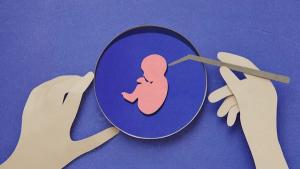
For you who are theologically curious, John Paul II is committed to creationism—that is, the idea that God creates a new soul that begins at conception but lasts to eternity.
This use of the term creationism should be clearly distinguished from its use in the evolution controversy. In the evolution controversy, creationism in its biblical and scientific forms refers to a belief held in many Protestant circles that the earth is young, less than ten thousand years old, and that all species were specifically created by an act of God.
Not so in Roman Catholic circles. Here creationism refers to the belief that God creates a new individual soul for each person being born. The two uses have no connection with one another. The Supreme Court of Alabama need not necessarily commit itself to creationism in either form to render its judgment against destruction of unimplanted embryos.
One soul for each genetically unique person
There is a fatal flaw in the Vatican argument. Scientifically speaking, there does not exist a human individual person at conception. Yet, the Vatican position is predicated on this mistaken belief: when the genetic code of the father and the genetic code of the mother combine into a single new genome, a historically unique person is for the first time established. This apparently awesome natural moment seems just right for God to honor it with the impartation of a freshly created soul. A new soul for a new individual is the Vatican logic. This logic is breathtaking in its coherence.
The Vatican is not alone here. Respected Orthodox theologian and bioethicist John Breck reports that “The Orthodox Church has always taught that human life begins at conception, when a sperm unites with an ovum to produce a genetically unique, living being” (Breck 1998, 251). Breck assumes here a connection between three items: fertilization, genetic uniqueness, and moral protection from abortion.
Scientifically speaking, however, nature just does not operate the way the Vatican and Father Breck think it does. The moment of conception may be the moment in which a unique genome is established, to be sure. But it is not the moment in which a new individual person is created. Nor is it the case that each new human person possesses a unique genome.
Spontaneous expulsion of embryos
When we co-authored our book, Sacred Cells, Karen Lebacqz along with the late Gaymon Bennett and I identified three phenomena occurring within nature that are theologically relevant (Peters, Lebacqz and Bennett 2008, Chap 13). We noticed one important fact: nature is not dedicated to protecting embryos.
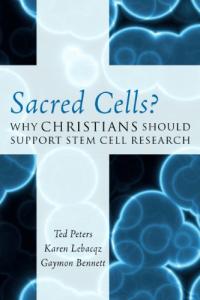
First, the mother’s body does not necessarily honor this awesome moment with as much respect as Vatican bioethicists do. Estimates range from 50% to 80% of naturally fertilized eggs are flushed from the mother’s body before they can adhere to the uterine wall. Consider how many unique genomes get flushed right out of the system!
We have learned from the theory of evolution that nature is profligate with regard to offspring—that is, each species produces far more offspring than is needed for sustaining the species. Nature seems almost prescient that most will die and only a small percentage will survive to reproductive age. Nature seems quite content to eliminate the vast majority of fertilized ova and retain only a few to bring to birth. If this is how nature behaves, does nature have divine approval?
If the Vatican is serious about associating a divine soul with each and every zygote, and if the mother’s body by nature eliminates the majority of ensouled embryos, then theologically it would be difficult to see God’s intentions as carried out by natural processes.
As one can imagine, it would give a Roman Catholic bioethicist nightmares to think that God would be flushing ensouled persons so egregiously from a mother’s body. This would be intolerable. This leads some bioethicists such as Benedict Ashley, O.P. and Kevin O’Rourke, O.P., to speculate. “Probably many of these imperfectly fertilized ova were never prepared for ensoulment” (Ashley and O’Rourke 1997, 235). Somehow, these bioethicists assume, God and nature must be working harmoniously together. This warrants mining science for what it tells us about natural processes.
Look again at what these Roman Catholic bioethicists are assuming. Flushed ova are “imperfect.” Does this imply those retained are perfect? Or, at least ensoulable? Apparently, something about the physical character of the embryo becomes a necessary prerequisite for God to create a special soul. And the flushed embryos do not meet the specifications warranting ensoulment.
How are we to evaluate such a speculative tenet? This defense appears to be a tendentious grasping at metaphysical straws, inconsistent with the stated assumptions of Vatican ethical deliberation to date. It would be so much easier to admit that nature herself does not communicate to us what such ethicists think it does.
Twinning
In my opinion, the most dramatic natural refutation of the Vatican position is twinning. At conception, the early embryo is preformed. Each cell within the embryo is totipotent—that is, each cell can make not only any tissue in the body, it can also make an entire person. Whether in vivo or ex vivo, during the first few days the agglomeration of cells can divide into twins, quadruplets, octuplets, or even rarely into sixteen individual embryos. All of these would have the same genetic code, even if they become separate individuals. Monozygotic twins—what we call “identical” twins—are the result of such cell division. If identical triplets are born, we know that the early embryo had split into four and one of them was flushed from the mother’s body at some point.
To make it even more complex, during these early stages which can last up to twelve or fourteen days, these divided embryos can recombine. Twins can become a single person again. It is possible that each person reading this was once a twin at an early stage of embryonic development, even though now we are individuals. All this is possible because the cells that are dividing during early embryo development are preformed, not yet differentiated. Before attaching to the uterine wall in vivo about the 12th or 14th day after conception, the early embryo is not yet committed to making one or more individual human beings. Only in vivo, when the embryo attaches to the mother’s womb, can we distinguish a single individual fetus.
Not at conception. Only two weeks later at the moment of attachment to the mother’s body can we identify an individual who will become a person. It would be silly to ascribe personhood with ensoulment prior to individuation.
Here is what is important theologically: two or more babies can be born with identical genomes. Nature does not connect genetic uniqueness with the uniqueness of being a human individual.
Chimerism
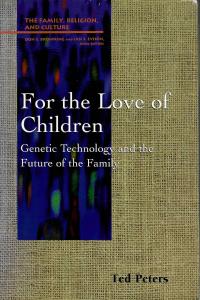
The third phenomenon within nature that undercuts the Vatican association of an individual human person with a unique genome is chimerism. A chimera is a single individual with two or more genomes. Within the mother’s body, in vivo, frequently two or more eggs can be fertilized at the same time. If two separate fertilized eggs develop simultaneously and each creates its own pregnancy, two babies will be born at the same time. We know these as “fraternal” twins—that is, twins with different genomes. Fraternal twins are the equivalent of any other pair of brothers and sisters.
Curiously if not weirdly, something else can take place in vivo. This pair of fraternal twin zygotes can combine to form a single embryo. If brought to term, the resulting baby is a chimera. A chimera is a single person with two genetic codes. If the two fertilized ova are of the same gender, then the baby girl or baby boy may grow up, live a normal life, and never know that he, she, or they began as fraternal twins.
If, however, a male and female combine, then the resulting baby is a hermaphrodite. The term hermaphrodite combines the names of two Greek gods, the male Hermes with the female Aphrodite. Doctors may look at such a newborn baby and wonder, “now, just what is it? A boy? A girl?” Frequently early surgery steers the newborn in the direction of one gender or the other. In such a case, a genetic test is likely to reveal two genomes, one with an XY pair of chromosomes and the other with two XX’s.
Hermaphroditism leads to some of today’s controversy over trans-gender identity.
So, let’s ask: how should we handle this theologically? If God allegedly creates a unique soul for a unique genome, what happens to the chimeric child? Does God create two souls, one for each zygote? Or does God create one soul, a single soul for a single person? One must admit that the Vatican position simply unravels at this point. What the Vatican should have done theologically is identify ensoulment with the human person and not with a so-called unique genome.
For emphasis let me repeat the point: the unique genome does not determine personhood. The intention of the Vatican to protect human personhood should focus on the person without regard to the genome.
Back to Alabama
Even though Chief Justice Tom Parker appealed to Scripture and to Reformed systematic theology, his argument is too thin to provide strong support for locating morally protectable dignity at conception. Justice Parker could have provided a much thicker and stronger argument by borrowing from Popes John Paul II and Benedict XVI. Even so, I dread to say, the argument would fail in either the weaker Protestant or stronger Catholic form.
At conception we do not yet have an individual person with a defined genome let alone irrefutable knowledge that ensoulment has taken place. Ex vivo in an IVF test tube, the cell culture is preformed, unstructured. The DNA is polysemous. To locate morally protectable human dignity ex vivo prior to the 14th day lacks consonance with what is scientifically known.
Conclusion
Again, I applaud the Supreme Court of Alabama and I applaud our Vatican bioethicists for their dedicated search for a solid reason to protect the life and wellbeing of the unborn child. But, unfortunately, like a funnel, establishing moral protectability at conception does not hold water.
During this election cycle when the right to abortion choice is playing such a large role in public discussion, theologians and justices need philosophically sound reasons for making public policy. Although ethical and legal arguments must be consonant with what is scientifically known, we dare not ask science to do our theology or our ethics for us.
In this Patheos series, I will try mapping better and worse theological arguments. I’m searching for those signposts pointing us toward public policies that make a safe home for both women’s health and the child’s well-being.
SR 5101. Abortion 1. Are frozen embryos really children?
SR 5102. Abortion 2. Protecting Embryos in the Vatican
Abortion access for women’s health? What about the baby?
▓
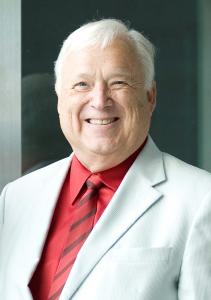
Ted Peters pursues Public Theology at the intersection of science, religion, ethics, and public policy. Peters is an emeritus professor at the Graduate Theological Union, where he co-edits the journal, Theology and Science, on behalf of the Center for Theology and the Natural Sciences, in Berkeley, California, USA. His book, God in Cosmic History, traces the rise of the Axial religions 2500 years ago. He tackled the implications of genetic innovation for the future of humanity in Playing God? Genetic Determinism and Human Freedom? (Routledge, 2nd ed., 2002) as well as For the Love of Children: Genetic Technology and the Future of the Family (Westminster/John Knox 1997). His essays are collected in Science, Theology, and Ethics (Ashgate 2003) The Voice of Public Theology (ATF 2023).
Recently Ted edited AI and IA: Utopia or Extinction? (ATF 2019). Along with Arvin Gouw and Brian Patrick Green, he co-edited the new book, Religious Transhumanism and Its Critics hot off the press (Roman and Littlefield/Lexington, 2022). His fictional spy thriller, Cyrus Twelve, follows the twists and turns of a transhumanist plot.
Visit Ted Peters’ website, TedsTimelyTake.com.
▓
References
Alabama. LePage v. Center for Reproductive Medicine. Ruling, fichrome-extension://efaidnbmnnnibpcajpcglclefindmkaj/https://static01.nyt.com/newsgraphics/documenttools/4b56014daa6dda84/a039b1d9-full.pdf .
Ashley, Benedict, and and Kevin O’Rourke. Health Care Ethics: A Theological Analysis. Washington DC: Georgetown University Press 4th ed, 1997.
Breck, John. The Sacred Gift of Life. Crestwood NY: St Vladimer’s Press, 1998.
Peters, Ted, Karen Lebacqz, and and Gaymon Bennett. Sacred Cells? Why Christians Should Support Stem Cell Research. New York: Roman and Littlefield, 2008.
Pope, John Paul II. “Evolution and the Living God.” In Science and Theology: The New Consonance, by ed Ted Peters, 149-152. Boulder CO: Harper/Westview https://www.ewtn.com/library/PAPALDOC/JP961022.HTM., 1998.



